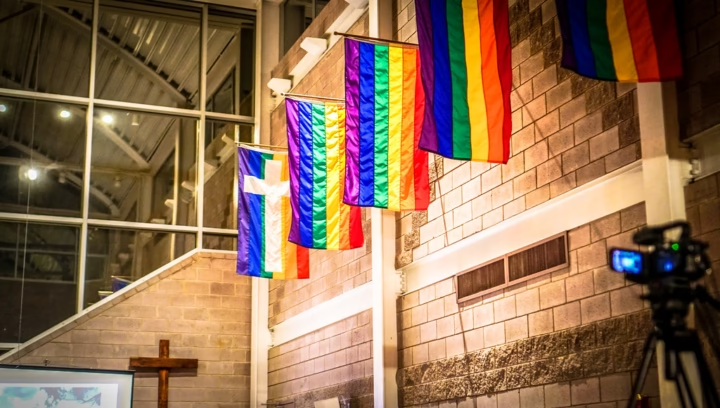October 27: A Journey Through History, Cultural Significance, and Cosmic Marvels

Animation Day: A Journey Through the Art and Innovation of Animated Storytelling
10 of the wealthiest female singers and actresses in the world
October 27: A Journey Through History, Cultural Significance, and Cosmic Marvels
October 27 is a day that has special meaning in many different fields, from the celebration of cultural legacy and amazing cosmic discoveries to significant urban changes and economic turning points. This article explores the noteworthy occasions that make up October 27 and considers how each advances our knowledge of the past, society, and the cosmos.

Historical Turning Points
The Inception of Contemporary Urban Transportation: The First Subway Line in New York City (1904):

The first subway line in New York City opened on October 27, 1904, revolutionizing urban life and establishing a worldwide standard for public transportation. This first section, which stretched from City Hall in Lower Manhattan to 145th Street in Harlem, was around nine miles long and operated by the Interborough Rapid Transit Company (IRT). Horse-drawn carriages, streetcars, and elevated trains had been the city’s main forms of transportation; this system, which included 28 stops, was intended to reduce congestion and sluggish travel times.
The “cut-and-cover” approach, which included excavating trenches, installing tracks, and then covering them with streets, was used to build the subway. Although this approach was effective and sped up construction, it presented some difficulties, such as rerouting utility lines and controlling disturbances to the public. Nevertheless, a new technical standard was established when the project was finished in record time.
Economic and Social Impact: New York’s economy was revolutionized by the subway. New Yorkers could now move about the city for five cents, linking communities and spurring the growth of what would become one of the world’s most diversified, densely inhabited metropolitan environments. The subway eventually made it easier for people, companies, and industries to move across the city, bringing the boroughs together to form a single, coherent metropolis.
The New York City subway system is still one of the biggest and most recognizable transportation networks in the world today. With more than 472 stations and millions of commuters every day, it has been expanding and embodies the resilience and connectedness that characterize New York.
The “Mini-Crash” of the 1997 Stock Market and Financial Interdependence

The Asian Financial Crisis’s financial instability caused the Dow Jones Industrial Average to plummet 554 points on October 27, 1997. The interconnectedness of the world’s markets was emphasized by this incident, which also brought to light weaknesses that would subsequently guide risk management and financial reforms.
The Financial Crisis in Asia
After starting in Thailand, the crisis swiftly expanded across Asia, impacting the economy of South Korea, Indonesia, and other nearby countries. Investors from all around the globe responded to these markets’ declines by withdrawing money, which had an impact on international equities, notably the US Dow Jones.
Affecting American Markets:
The U.S. economy’s vulnerability to international markets was brought home sharply by this “mini-crash.” As a result, both investors and legislators started giving financial protections top priority, realizing the value of diversified portfolios and the need of market laws that would be resilient to shocks from across the world.
Lessons Learned: The occurrence in 1997 highlighted how crucial international collaboration is to financial policy. Economic reactions to subsequent crises, such as the global financial crisis of 2008, would be influenced by actions done in the aftermath of this disaster.
In 1971, the Democratic Republic of the Congo celebrated Republic Day.
Republic Day is observed on October 27 in the Democratic Republic of the Congo to honor the day the country became a republic. This shift represented a step toward independence and a chance to forge a political identity apart from colonial influences.
Historical Context
After gaining independence in 1960, the Congo, which had previously been a Belgian possession, saw severe political unrest. In the face of persistent regional difficulties, the decision to form a republic symbolized the nation’s tenacity and dedication to a self-determined destiny.
Modern Observance
Today, Republic Day is a day to reflect and honor the progress achieved in the direction of stability and unification. Along with highlighting the importance of sovereignty and the country’s promise for the future, it’s also a chance to celebrate the Congo’s rich cultural heritage.
October 27’s Cultural Significance
International Day of Audiovisual Heritage
World Day for Audiovisual Heritage, observed on October 27 by UNESCO, highlights the importance of preserving audiovisual materials, such as recordings, television shows, radio broadcasts, and movies, since they document significant historical, political, and cultural events that are ingrained in our collective memory.
The function of audiovisual archives is to provide a singular, immersive window into the past. They are useful for historical study, education, and cultural preservation because, in contrast to textual documents, they retain subtleties in voice, scenery, and context.
Difficulties with Preservation
Materials used in audiovisual production are especially susceptible to degradation. Over time, tapes, records, and film reels deteriorate, and many need specific handling and preservation to be functional. Additionally, maintaining original material while guaranteeing compatibility with contemporary technology is a twin problem brought about by the transition from analog to digital forms.
International Recognition and Significance
In observance of this day, organizations all across the globe host talks, displays, and screenings that emphasize rare video and the value of preserving these materials for future generations. This day serves as a reminder of the importance of audiovisual legacy as a vital component of human history.
Cosmic Observations from the Hubble Space Telescope on October 27
The Hubble Space Telescope has continuously produced breathtaking photos of far-off galaxies, nebulae, and star clusters since its inception in 1990, deepening our knowledge of the cosmos. In specifically, October 27 is linked to the Hubble’s ability to take starry pictures, often showcasing celestial entities and phenomena that help unravel the secrets of space.
Star Clusters and Nebulae: “The Orion Nebula”

One of the most researched star-forming areas near Earth is the Orion Nebula, which Hubble has been concentrating on in recent Octobers. Because of the abundance of young, new stars in its gaseous clouds, this nebula gives astronomers important information on the formation of stars and planetary systems.
The structure and composition of the Andromeda Galaxy, the closest spiral galaxy to our own Milky Way, are revealed in remarkable detail by Hubble’s studies. These pictures give us a better knowledge of how galaxies develop and provide a peek at what could be out there in space.
The Importance of Hubble’s October Observations: tellar Life Cycles and Evolution
Hubble allows astronomers to investigate the life cycles of stars, from creation to supernova, by taking pictures of star clusters and areas where star formation is active. Fundamental problems about the formation, evolution, and eventual demise of stars are addressed by these discoveries.
Earthly Events from a Cosmological Perspective**: Hubble’s October photos often remind us of the vastness of space and our position in it. The telescope provides a viewpoint that situates human advancement within a larger, cosmic chronology, even as we celebrate historical and cultural accomplishments on Earth.
Technological Advancements and the Legacy of Hubble: Astronomical Innovation
Imaging technologies and data collecting techniques that are now commonplace in astronomical study were developed by Hubble. The foundation for next observatories like the James Webb Space Telescope has been laid by its high-resolution photographs and the sheer extent of its discoveries, which have increased scientific knowledge.
Cultural and Educational Impact
When Hubble’s images are often shown to the public, they pique interest and encourage next generations to pursue scientific research. The public’s enjoyment of astronomy and the scientific quest for information beyond our planet has been greatly aided by the telescope’s discoveries.
Final Thoughts: October 27
October 27 continues to be a day full of significant events that honor advancements in a number of areas, including space exploration, urban innovation, financial consciousness, and cultural preservation. This anniversary highlights our shared commitment to development, resiliency, and understanding, from the launch of the New York City subway to the celebration of Republic Day in the Congo and UNESCO’s work to preserve audiovisual heritage. The cosmic discoveries made by the Hubble Space Telescope, meantime, put human accomplishments and hardships in a larger perspective by serving as a reminder of the vast and enigmatic world beyond.
Every year, October 27th brings with it a chance to consider our collective journey on Earth and in space, as well as to imagine a future that strikes a balance between human progress and a profound respect for culture, history, and the boundless marvels of the cosmos.
You also may like: newstimzone.com/blog



















